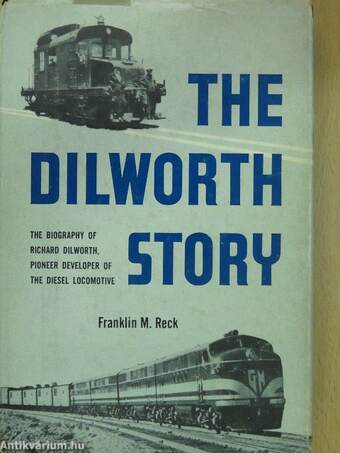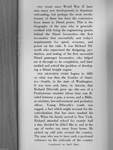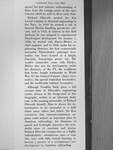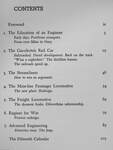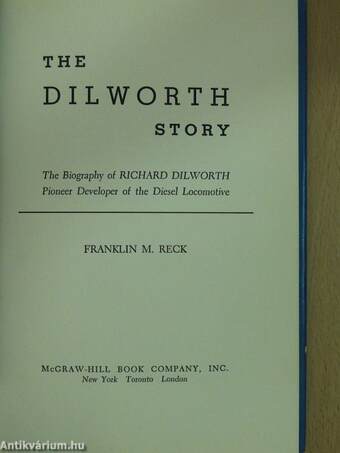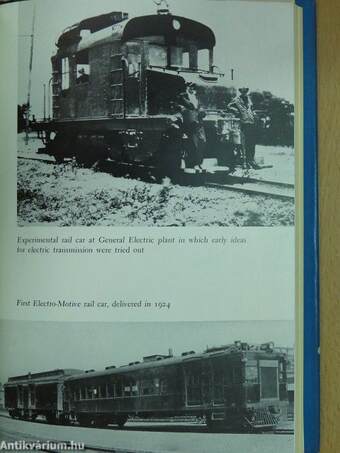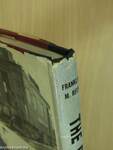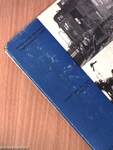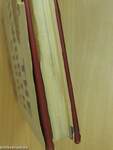1.116.650
kiadvánnyal nyújtjuk Magyarország legnagyobb antikvár könyv-kínálatát
The Dilworth Story
The Biography of Richard Dilworth, Pioneer Developer of the Diesel Locomotive
| Kiadó: | McGraw-Hill Book Company, Inc. |
|---|---|
| Kiadás helye: | New York |
| Kiadás éve: | |
| Kötés típusa: | Fűzött keménykötés |
| Oldalszám: | 105 oldal |
| Sorozatcím: | |
| Kötetszám: | |
| Nyelv: | Angol |
| Méret: | 21 cm x 14 cm |
| ISBN: | |
| Megjegyzés: | Fekete-fehér fotókkal. |
naponta értesítjük a beérkező friss
kiadványokról
naponta értesítjük a beérkező friss
kiadványokról
Fülszöveg
THE YEARS since World War II have
seen many new developments in American
railroading, but perhaps the most revolu-
tionary of these has been the conversion
from steam to Diesel power. This is the
biography of the man who is generally
credited with being the engineering genius
behind the Diesel locomotive—the first
locomotive that successfully met today's
requirements for speed, economy, and
power on the rails. It was Richard Dil-
worth who supervised the designing, pro-
duction, and testing of the first successful
Diesel passenger locomotive, who helped
see it through to its completion, and later
tackled and solved the problem of develop-
ing a Diesel freight engine.
the dilworth story begins in 1885
on what was then the frontier of Amer-
ica—Seattle, in the state of Washington,
It was here and, later, in Astoria, that
Richard Dilworth grew up—the son of a
Presbyterian minister whose time was di-
vided between a gun, a noose, and a Bible,
as minister,... Tovább
Fülszöveg
THE YEARS since World War II have
seen many new developments in American
railroading, but perhaps the most revolu-
tionary of these has been the conversion
from steam to Diesel power. This is the
biography of the man who is generally
credited with being the engineering genius
behind the Diesel locomotive—the first
locomotive that successfully met today's
requirements for speed, economy, and
power on the rails. It was Richard Dil-
worth who supervised the designing, pro-
duction, and testing of the first successful
Diesel passenger locomotive, who helped
see it through to its completion, and later
tackled and solved the problem of develop-
ing a Diesel freight engine.
the dilworth story begins in 1885
on what was then the frontier of Amer-
ica—Seattle, in the state of Washington,
It was here and, later, in Astoria, that
Richard Dilworth grew up—the son of a
Presbyterian minister whose time was di-
vided between a gun, a noose, and a Bible,
as minister, law-enforcement and probation
officer. Young Dilworth's youth was
rugged, a fact which might account for the
individualism that has since marked his
life. When his family moved to New York,
Richard attended school for exactly half
a day, decided he didn't like it, and at the
age of twelve ran away from home. He
picked up odd jobs around the country.
The man who was to have such a profound
influence on the railroads of the country
(continued on back flap)
(continued from front flap)
gained his first intimate understanding of
them from the vantage point of the open
boxcars which he rode in those early days.
Richard Dilworth secured his first
formal training in electrical engineering in
the Navy. In 1910 he secured a job at
General Electric handling gas-electric rail-
cars, and in 1913, as interest in this field
declined, he was assigned to experimental
Diesel-engine development. On lanuary 1,
1926, he started with Electro-Motive as
chief engineer, and in 1934, under his en-
gineering direction, the first commercially
successful Diesel-electric passenger loco-
motive was born—housed in a simple,
four-axle, boxcar-type power car. Dil-
worth's twenty-five years with Electro-
Motive also saw the development, under
his direction, of the FT, the workhorse
that broke freight bottlenecks in World
War II; the General Purpose (Jeep) loco-
motive; the special Australian locomotive;
and the world-wide military locomotive.
Although Franklin Reck gives a full
account here of Dilworth's engineering
career, always in the foreground of this
biography, written in an informal, lively
tone, is the amazing personality of Richard
Dilworth himself. Here is shown his de-
termination to be successful in a field
where many others had failed; his firm
conviction that internal-combustion en-
gines could achieve an important place in
American railroading; his bluntness of
speech and forthright character; his won-
derful store of anecdotes and stories.
Richard Dilworth emerges here as a highly
individualistic, adventurous man—a man
who rose, with little formal learning, to
become a pioneer of a revolutionary new
development in American railroading. Vissza
Témakörök
- Életrajz > Tudomány > Mérnökök
- Idegennyelv > Idegennyelvű könyvek > Angol > Műszaki
- Idegennyelv > Idegennyelvű könyvek > Angol > Művelődéstörténet
- Idegennyelv > Idegennyelvű könyvek > Angol > Életrajz > Tudomány > Mérnökök
- Művelődéstörténet > Technikatörténet > Közlekedés
- Műszaki > Idegennyelv > Angol
- Műszaki > Közlekedés
- Műszaki > Közlekedés > Vasút > Mozdonyok, vasúti szerelvények
- Műszaki > Közlekedés > Vasút > Vasúttörténet
- Műszaki


